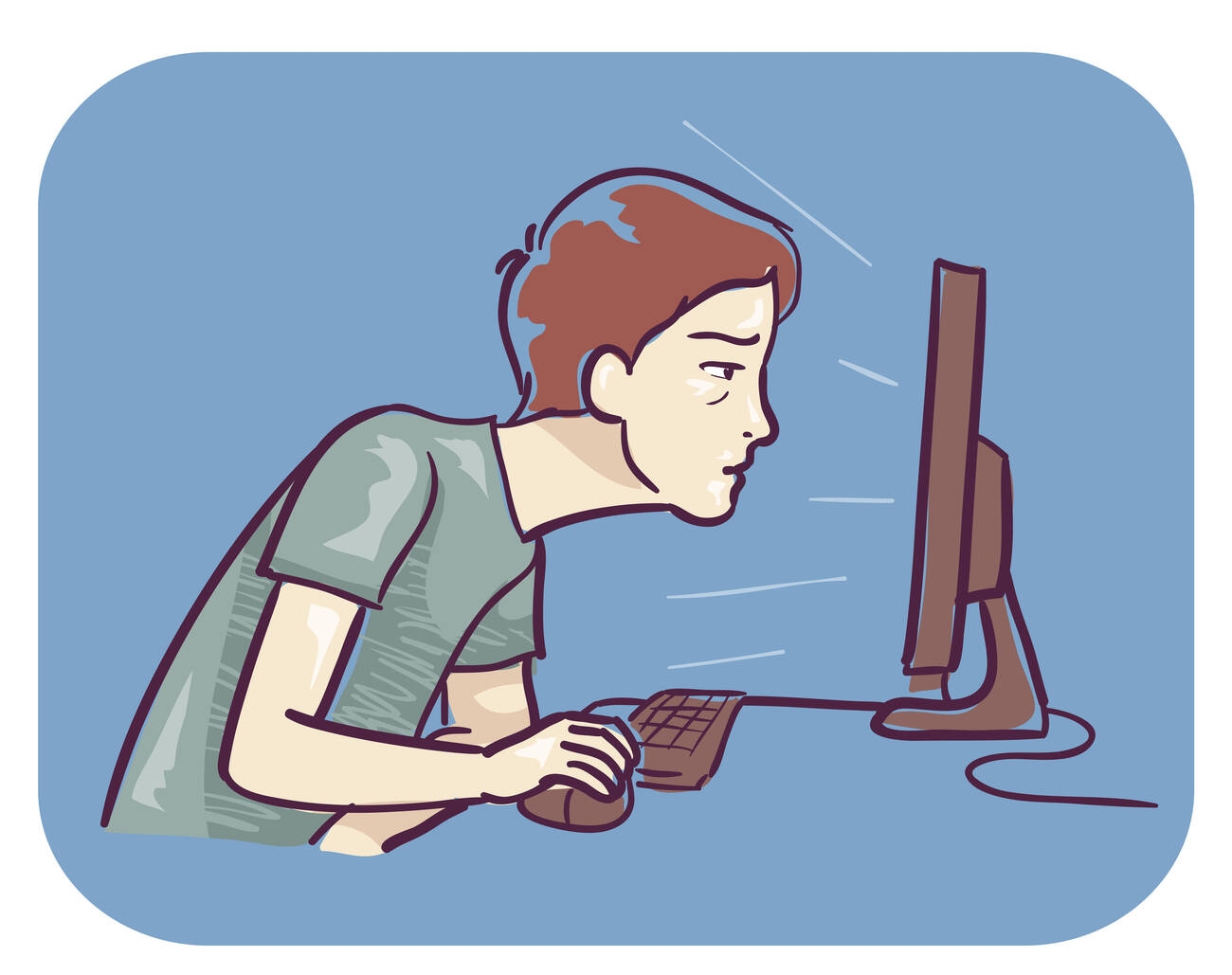Are your eyes feeling tired and strained after spending hours on your computer? It’s time to uncover the causes behind your computer blurred vision. Excessive screen time, poor lighting, bad posture – these are just a few factors contributing to this discomfort. In this article, we will delve into the reasons why your vision becomes blurry and explore practical solutions to alleviate the strain. So sit back, relax, and let’s shed some light on the causes of computer blurred vision.
Excessive Screen Time and Its Impact on Vision
If you spend too much time in front of screens, it can strain your visual system and lead to blurry vision. One factor that contributes to this is the impact of blue light on your vision. Blue light emitted by screens can cause eye fatigue and disrupt your sleep cycle. To reduce screen time, try implementing strategies such as setting limits on device usage or taking regular breaks away from screens. Another issue related to excessive screen use is dry eyes. Staring at screens for long periods can decrease blinking, leading to dryness and discomfort. It’s important to give your eyes a break by looking away from the screen and blinking frequently. Lastly, remember the importance of regular eye exams to detect any underlying vision problems and ensure optimal eye health.
The Role of Screen Resolution in Blurred Vision
Adjusting the screen resolution on your device can improve the clarity of what you see. When it comes to screen resolution and eye strain, finding the right balance is essential. High-resolution screens can provide a sharper image, reducing the strain on your eyes. On the other hand, low-resolution screens may cause blurry vision and eye fatigue.
The effects of blue light on vision are also important to consider. Blue light emitted by digital devices can disrupt sleep patterns and cause eye strain. It’s crucial to limit exposure to blue light by using features like night mode or blue light filters on your devices.
Regular eye exams play a significant role in maintaining good eye health. Eye exams can detect any vision problems early on and ensure that your prescription is up-to-date.
Taking breaks from screen time is equally important for preventing eye strain. Giving your eyes regular rest intervals and practicing proper ergonomics while using digital devices can help alleviate symptoms of digital eye strain.
Incorporating these measures into your daily routine can go a long way in protecting your eyesight and promoting overall visual comfort.
How Poor Lighting and Posture Contribute to Computer-Induced Blurred Vision
Poor lighting and bad posture can worsen symptoms of digital eye strain, leading to increased discomfort and difficulty seeing clearly on screens. Improper ergonomics, such as sitting too close to the screen or at the wrong angle, can contribute to eye strain from glare and make it harder for your eyes to focus. Overuse of digital devices without taking breaks can also contribute to blurry vision. Additionally, the effects of blue light emitted by screens can further strain your eyes and cause visual disturbances. To alleviate these issues, make sure you have proper lighting in your workspace and maintain good posture while using digital devices. Take regular breaks to rest your eyes and consider using blue light filters or glasses designed for screen use.
The Effects of Screen Glare and Reflections on Visual Clarity
Screen glare and reflections can make it difficult to see clearly and negatively impact visual clarity. When using a computer or digital device, the presence of screen glare and reflections can cause discomfort and strain on your eyes. Not only does this affect your ability to focus, but it also contributes to digital eye strain. Additionally, the blue light emitted by screens can have a detrimental effect on your eye health over time. To reduce these issues, there are strategies you can implement such as adjusting the screen position to minimize glare, using anti-glare filters or screen protectors, and taking regular breaks to rest your eyes. However, it is crucial for computer users to prioritize regular eye exams as well. Eye exams help detect any underlying vision problems and ensure that you are taking necessary measures to maintain optimal eye health while using digital devices.
Uncorrected Vision Problems and Their Connection to Blurred Vision From Computer Use
One of the main factors contributing to blurry vision from computer use is uncorrected vision problems, which can significantly impact your ability to see clearly. Here are some key points to understand about uncorrected vision problems and their connection to blurry vision:
- Causes of uncorrected vision problems: Uncorrected refractive errors such as nearsightedness, farsightedness, and astigmatism can lead to blurry vision when using a computer.
- Solutions for uncorrected vision problems: Wearing corrective eyeglasses or contact lenses prescribed by an eye doctor can help alleviate the symptoms of blurry vision.
- Importance of regular eye exams: Regular eye exams are crucial in detecting and correcting any underlying visual issues that may contribute to blurry vision from computer use.
- Impact of uncorrected vision problems on daily life: Uncorrected vision problems not only affect your ability to see clearly while using a computer but also impact other daily activities like reading, driving, and even enjoying hobbies.




